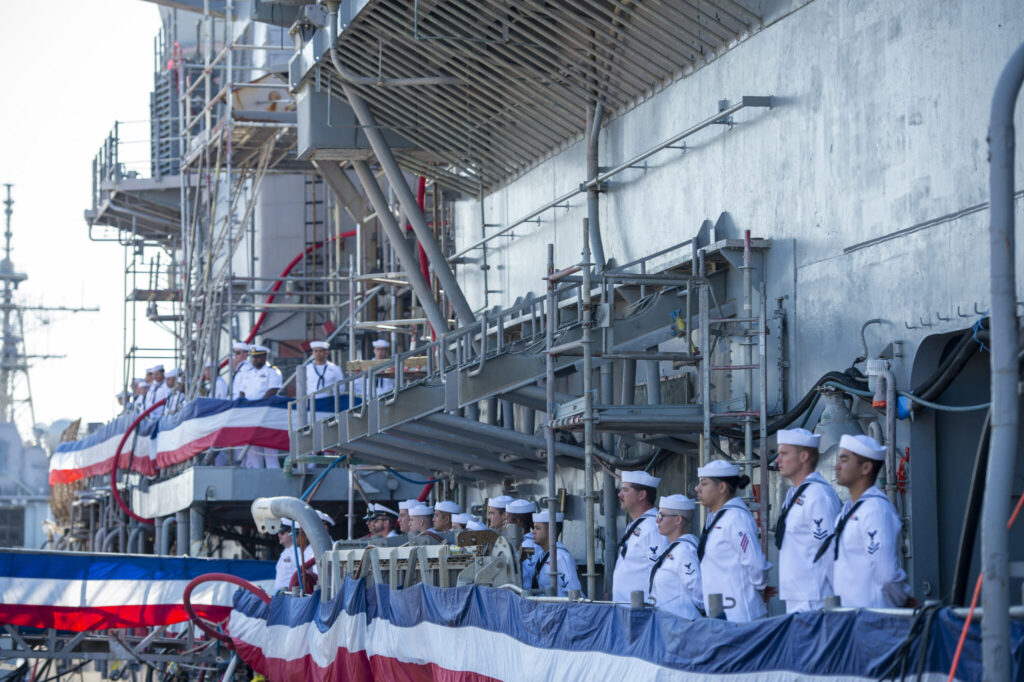
WASHINGTON — The U.S. Navy’s top officer held fast when discussing the controversial subject of decommissioning older ships in order to sustain a ready, relevant fleet in a discussion at an event in Washington.
“For our last four budget cycles, readiness has been our number one priority, followed by modernization of the fleet that we have today — 70% of which we’ll have a decade from now — and, finally, capacity at an affordable rate,” said Chief of Naval Operations (CNO) Adm. Michael Gilday, speaking Oct. 19 at the Atlantic Council. “My approach has been, commensurate with my responsibilities, to field the most lethal force we can now and into the future.”
Gilday said that fielding a lethal force involves maintaining ships; “not taking maintenance holidays — as sometimes we we’ve been prone to do in the past, when we made capacity king; to ensure that our supply storerooms are filled with the proper parts so that our ships are self-sustaining at sea; to ensure that our magazines are actually filled with weapons.”
Referring to the issue of capacity, Gilday said that “when we make decisions on which ships we’re going to decommission, the entering argument is the size of the fleet that we can afford.”
Citing the current high monetary inflation, the CNO noted that 60% of the Navy’s budget rises at a rate above inflation and has to be taken into account.
“Maintaining the fleet we have is extremely expensive,” he said.
Gilday said the Navy looks at stratifying lethality across its platforms, ranking those platforms from 1 to 20, helping to inform decisions about which ships to decommission.
“It gets back to what we can afford,” he said.
The CNO noted that some ships “haven’t seen a dry dock since 2000” and that some ships have 125 departures from specifications.
One example he cited was an engineering directive not to put a tugboat against one side of the ship because it could result in a hole puncture in the ship because the steel hull is too thin.
The CNO said that some Ticonderoga-class guided-missile cruisers are three years behind in completing maintenance at costs of $80 million or more, and with a weapon system that is not going to be upgraded in time “to face the threat that the Chinese pose.”
Gilday said that “when it comes down to making hard decisions on where to put your next dollar, those are decisions that need to be made and debated within the Pentagon.”
The CNO pointed out that a few ships account for most of the delay days in maintenance.
The Navy has reduced maintenance delay days from 7,700 as of January down to a little over 3,000 today. Between 40% and 50% of the delay days can be attributed to six or seven ships that the Navy would like to decommission.
“They are old and not fit to fight against the current threat,” he said. “They were designed in the 1970s for a fight of a bygone age, but we’re still holding onto them.”






